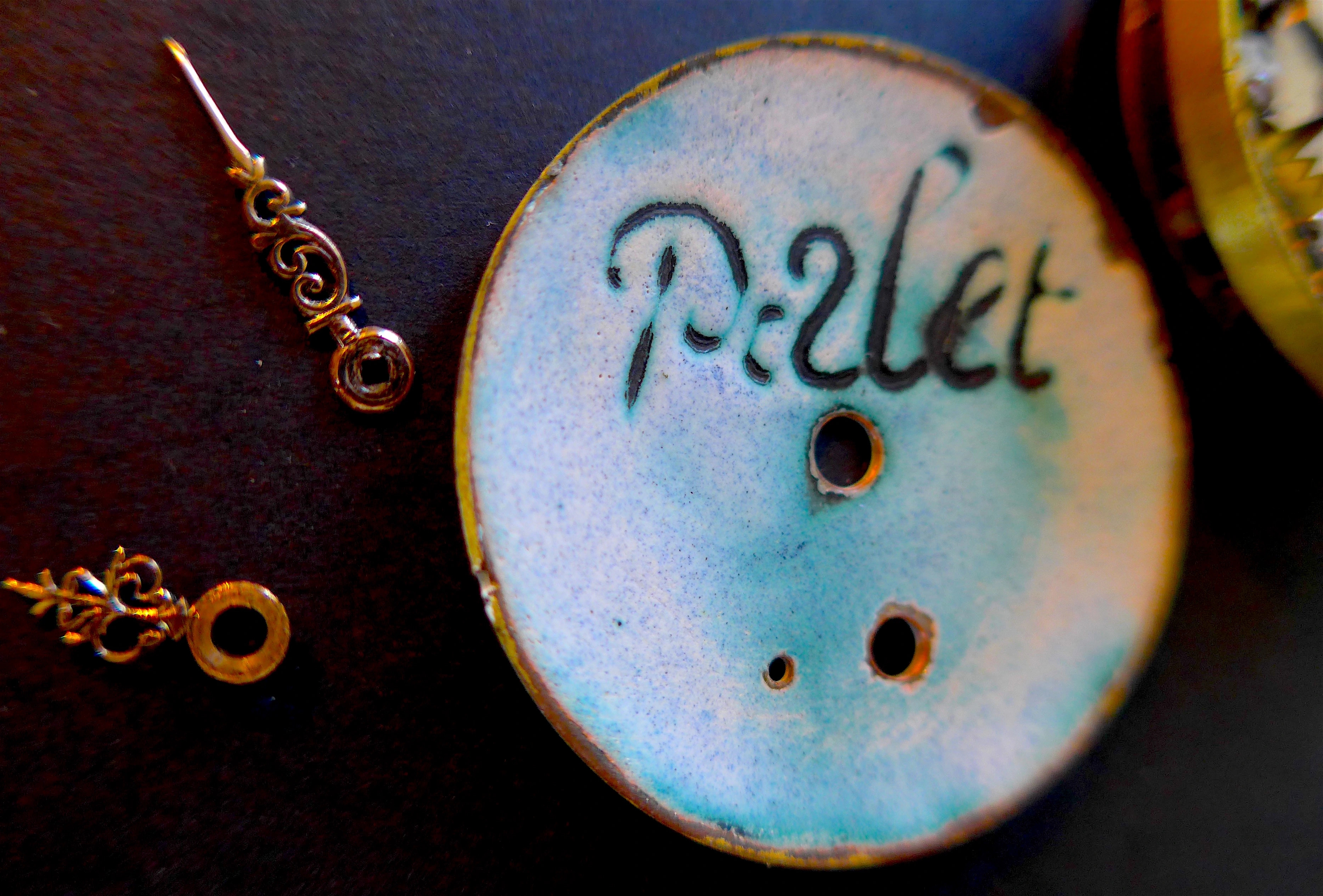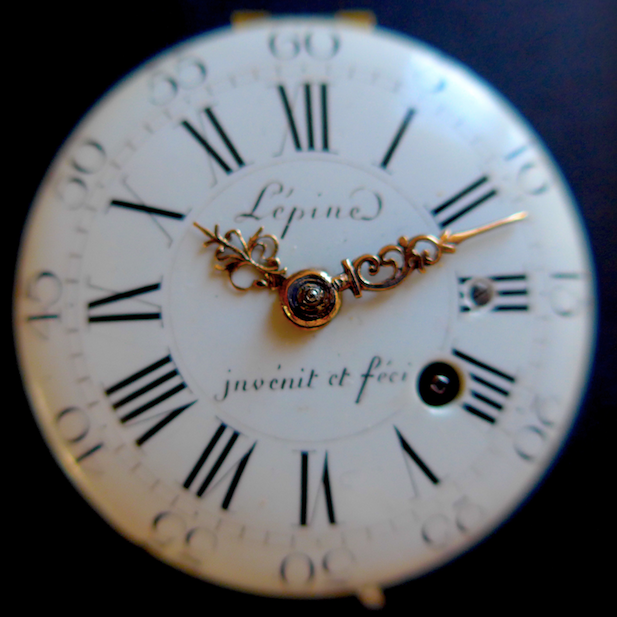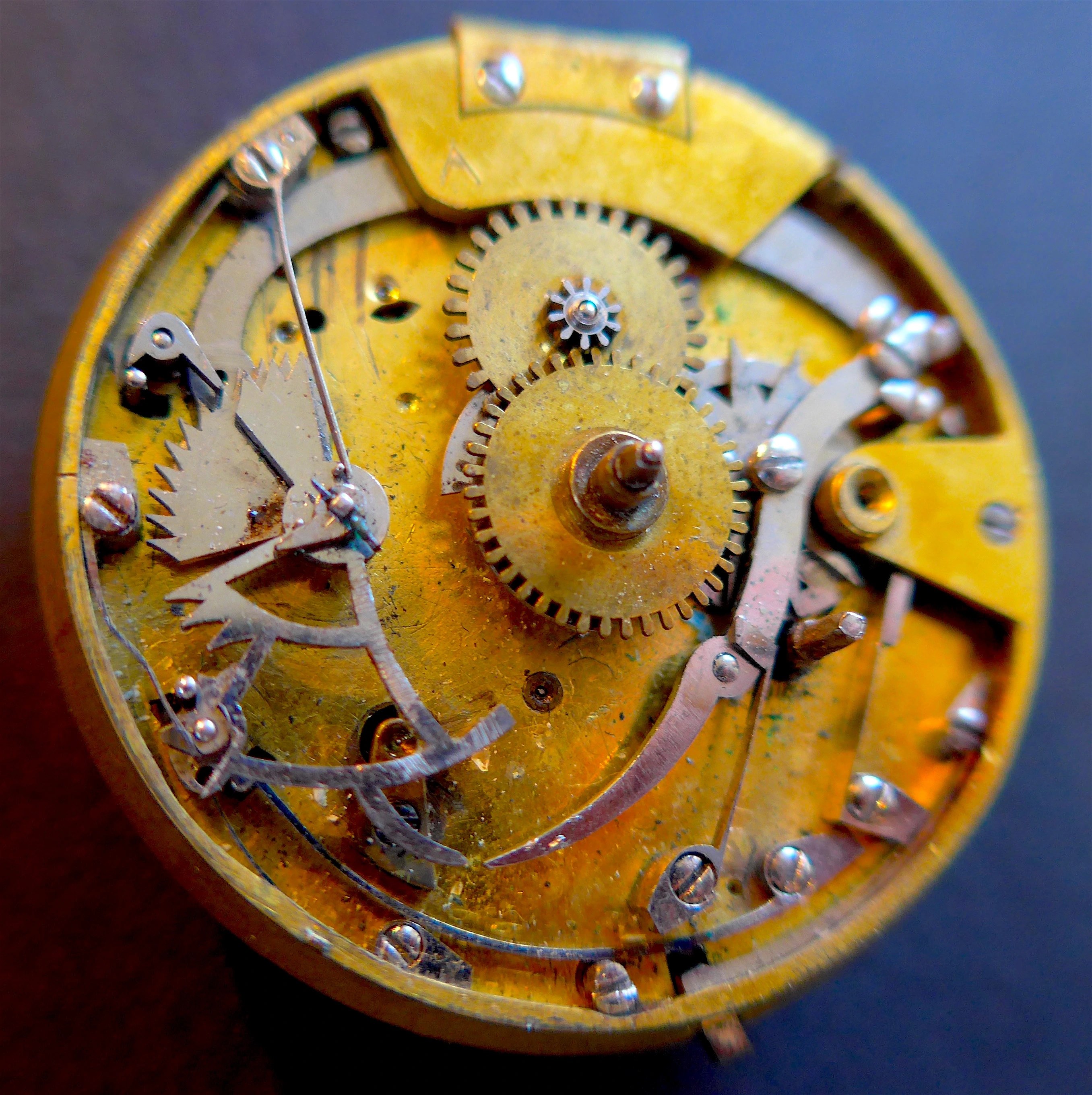




Description: Gilt brass, front wound, verge fusee, quarter repeating movement with repeating work of Lépine patent with two steel hammers ‘à toc’ (dial plate 39.0mm) with silver regulator dial and blued steel regulator hand. Featuring very small round baluster pillars. Back plate engraved ‘Lépine Hor(loger) du Roy A PARIS’ and numbered ‘No. 1103’. Dial plate rim unengraved. Enamelled copper dial with Roman and Arabic numerals, and signed ‘Lépine invent et fecit’. Counter-enamel signed ‘Palet’. Gold hour and minute hands of typical Louis XV style.
Provenance: Ex private collection Jean – Claude Sabrier (F)
Additional Info:

This is the earliest known movement featuring the repeating work invented by Lépine towards 1763. There is a report about it published in ‘L’ Academie Royale des Sciences’ in 1766. It was supposed to replace the system with chain and pulley. This new system requires less pieces for the repeating work but it has not been adopted right away, due to its complex manufacture. Many pieces equipped with it have survived, all others known to us and to literature have been used with the new Lépine calibre and Lépine used it for all repeating movements from 1784, in parallel with the augmentation in diameter of the watches. The shapes of the different pieces of the system evolved with time, then starting from the 19th century all watchmakers adopted this version.
Louis Moinet published the definitive setup in 1853 (see picture above). Literature puts the change of signature from ‘Lépine à Paris’ to ‘Lépine Horloger du Roy à Paris’ to production number 1100 which is dated 1766. This information permits to date this movement quite precisely. Moreover this movement is the earliest known with the addition ‘Horloger du Roy’ to Lépine’s signature.
